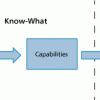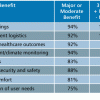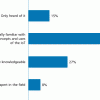Strategic advice to leverage new technologies
Technology is at the heart of nearly every enterprise, enabling new business models and strategies, and serving as the catalyst to industry convergence. Leveraging the right technology can improve business outcomes, providing intelligence and insights that help you make more informed and accurate decisions. From finding patterns in data through data science, to curating relevant insights with data analytics, to the predictive abilities and innumerable applications of AI, to solving challenging business problems with ML, NLP, and knowledge graphs, technology has brought decision-making to a more intelligent level. Keep pace with the technology trends, opportunities, applications, and real-world use cases that will move your organization closer to its transformation and business goals.
Recently Published
As has been our tradition for the last several years, we've compiled the five most intriguing articles published by the Business & Enterprise Architecture practice for today's Advisor. How did we come up with this list? We chose the articles that garnered the most feedback from Cutter Members. Your questions and comments not only make it possible to create lists like this -- they help focus Cutter's Senior Consultants' research on the areas that are most important to organizations like yours. So please keep your feedback coming.
"Of all the different types of technological change we have experienced in the last 1,000 years, it is the technologies of information and communications that seem to most capture our imaginations."
— Joseph Feller, Editor
At the moment, the Internet is buzzing with folks who are disappointed that the year 2015 (in which the late 1980's film Back to the Future: Part II is set) is upon us, and there is not a single flying skateboard in sight.
As you will see in the practitioner article in this issue of CBR, our co-contributors Cutter Senior Consultant Claude Baudoin and Matt Ganis demonstrate the scale of innovation potential and the complexity surrounding the Internet of Things (IoT).
Deriving firm conclusions from sparse input is almost impossible, of course.
Internet of Things Survey Data
This survey examines organizations' investment in and revenue from the Internet of Things (IoT); areas in which the IoT will see major adoption; and the benefits, challenges, and disruptive effects of the IoT. Almost half (46%) of the 48 responding organizations are headquartered or based in North America, with 25% in Europe, 17% in Asia/Australia/Pacific, 6% in the Middle East/Africa, and 6% in South America.
As has been our tradition for the last several years, we've compiled the five most intriguing articles published by the Data Insight & Social BI practice this year for today's Advisor. How did we come up with this list? We chose the articles that garnered the most feedback from Cutter Members and clients and those that created controversy among Cutter Senior Consultants and Fellows.
The Internet of Things (IoT) is creating high expectations from businesses and consumers about the possible ways it can help create new revenue models, increase efficiencies, and enhance customer experience. Businesses are looking to tap into the new business opportunities generated by the IoT, while consumers are seeking intelligent products and services that provide all kinds of insights to help them use those products and services optimally.
The Importance of Automation
Many organizations lack automation in their deployment processes. When asked, developers and operations engineers often talk about their many deployment scripts, their pages of documentation, and their personal knowledge of their applications' deep internal settings and configurations. Yet this doesn't really give us a clear idea of how well automated the deployment process is. We must drill deeper to understand the current DevOps process by asking the following questions:














